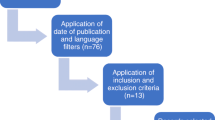Abstract
Experimental studies have shown that diffuse axonal injury is usually induced by positive or negative acceleration mechanisms. In order to determine the reliability of axonal injury (AI) as a marker of this type of traumatic insult, we compared cases of trauma-induced focal cortical hemorrhage without dural involvement (n = 67) with cases of trauma-induced subdural bleeding without cortical hemorrhage (n = 26). Both groups exhibited a wide range of post-traumatic survival times. The injuries in the first group were caused mainly by direct impact to the head, those in the second by acceleration/deceleration mechanisms. The investigations were based primarily on immunohistochemical demonstration of antibodies targeted to β-amyloid precursor protein (β-APP) in the pons as a marker of AI and the results were assessed semiquantitatively. No significant differences were found between the two groups. In both groups AI was detected in 80–100% of cases with survival times of more than 3 h and two thirds of all positive cases showed pronounced positivity. Additional comparison of cases of brain death due to mechanical trauma (n = 14) with cases of brain death due to non-mechanical trauma (n = 18) also disclosed no significant intergroup differences. Finally, investigations of the pons in cases of non-traumatic death due to cerebral hypoxia/ischemia (n = 51) demonstrated AI with the same frequency as in the other groups, although the expression tended to be less pronounced. Our results confirm that β-APP expression in the pons is a reliable indicator of AI but does not discriminate between injuries caused by traumatic strain or shearing mechanisms and secondary damage due to cerebral hypoxia/ ischemia or edema. In the large majority of cases with prolonged post-traumatic survival, it can therefore be assumed that AI in the pons is the consequence of primary and/or secondary events or a combination of both, as is common in non-missile head injury survived for more than 90–120 min. Therefore, positive differentiation of the type of biomechanical event based on this criterion alone is not possible.
Similar content being viewed by others
Author information
Authors and Affiliations
Additional information
Received: 19 December 1997 / Received in revised form: 1 April 1998
Rights and permissions
About this article
Cite this article
Oehmichen, M., Meißner, C., Schmidt, V. et al. Pontine axonal injury after brain trauma and nontraumatic hypoxic-ischemic brain damage. Int J Leg Med 112, 261–267 (1999). https://doi.org/10.1007/s004140050246
Issue Date:
DOI: https://doi.org/10.1007/s004140050246




